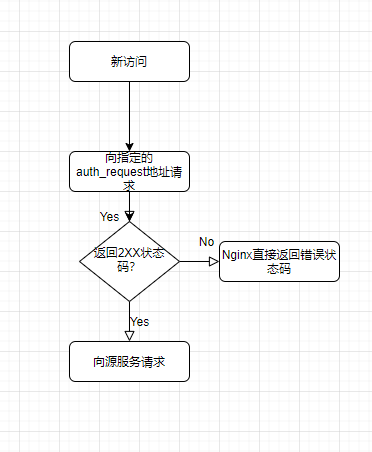Nginx auth_request 鉴权模块的使用
一般情况下Nginx自带两个有关于鉴权的模块,一个是auth_basic,另一个是auth_request,本文主要介绍auth_request。
流程

Nginx的配置
(server段中,也可以做成一个配置文件,通过include引用)
#设置401错误跳转,用于跳转到登录页
location @error401 {
#这里的url方便我们登录成功的跳转
return 302 https://auth.example.com/?url=https://$http_host$request_uri;
}
#内部路由
location /auth {
internal;
#鉴权服务器地址
proxy_pass http://127.0.0.1:8888/auth;
#不传递body内容,当然请求头会被传递
proxy_pass_request_body off;
proxy_set_header Content-Length "";
}
(location段中)
location / {
#指定内部路由与返回401的处理
auth_request /auth;
error_page 401 = @error401;
}
鉴权验证

(猫猫来源: https://http.cat/)
Nginx会通过所返回的状态码来判断是否放行请求,返回2XX放行,返回4XX则拦截请求,我们可以通过设置cookie来保证登录态的持续:
(Python3)
from sanic import Sanic, html, json, redirect
app = Sanic(__name__)
password = "19260817"
@app.get("/")
async def index(request):
return html("<form action="" method="POST"><input name="pw"><button type="submit">check</button></form>")
@app.post("/")
async def vindex(request):
pw = request.form.get("pw", None)
url = request.args.get("url", None)
if pw == password:
res = redirect(url)
res.cookies["login"] = True
res.cookies["login"]["httponly"] = True
#全域cookie
res.cookies["login"]["domain"] = ".example.com"
return res
return redirect("/")
@app.get("/auth")
async def auth(request):
login = request.cookies.get("login", False)
if login:
return json({"code": 200}, 200)
return json({"code": 401}, 401)
if __name__ == "__main__":
app.run(port=8888)